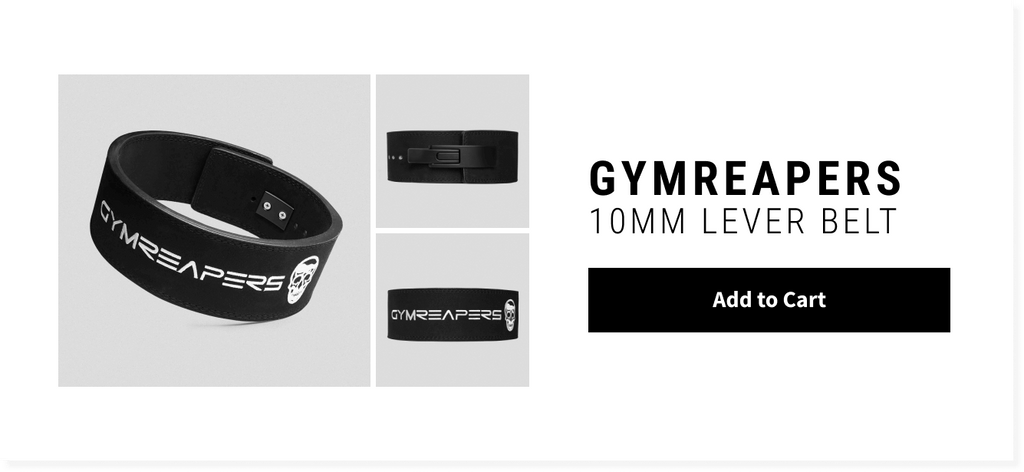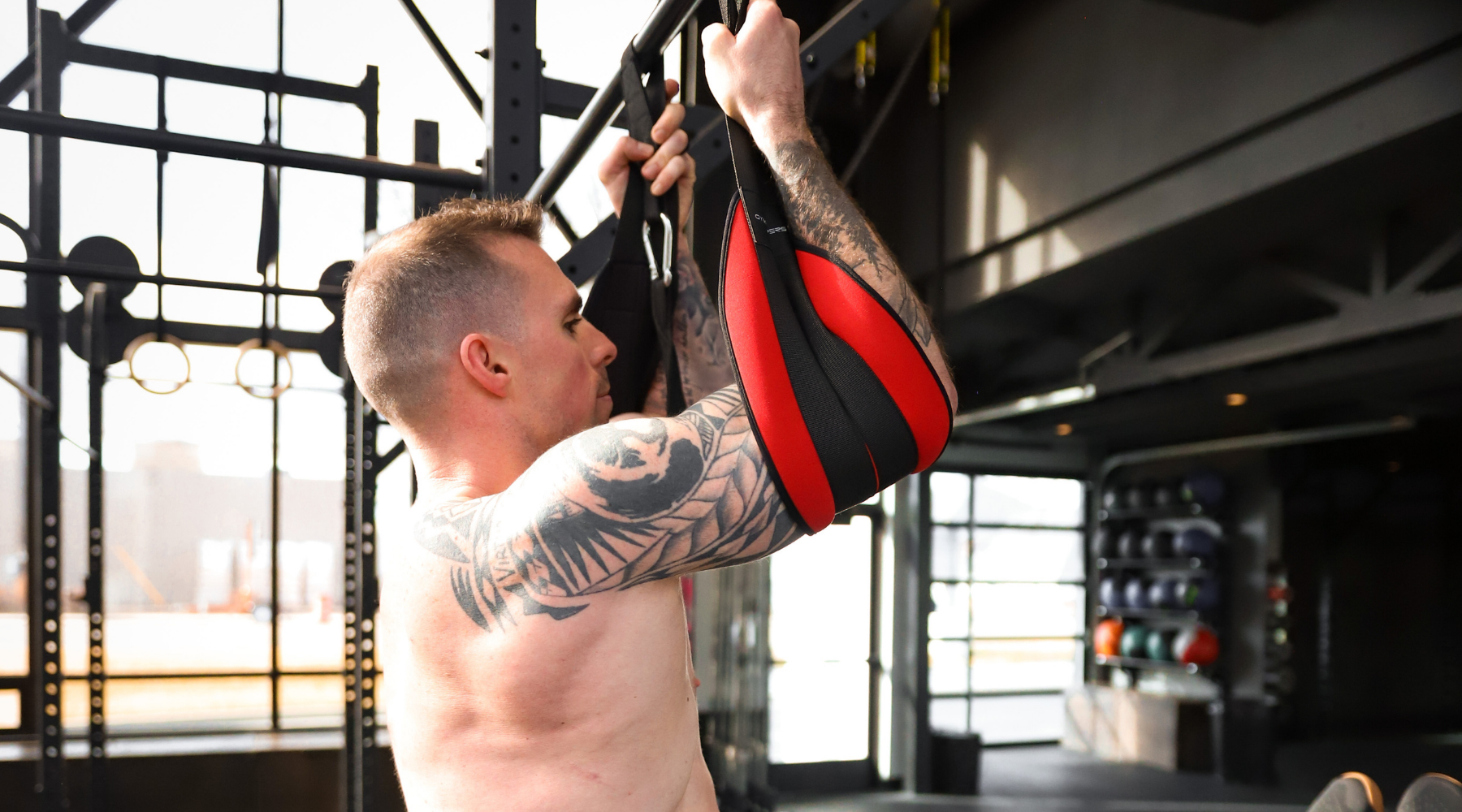If you’ve spent any time in a gym or fitness center lately, you’ve seen at least one or two people wearing a lever lifting belt. In general, weightlifting belts come in a variety of options, styles, and colors, depending on your fitness level.
When it comes to lever lifting belts, they’re most popular with powerlifters because they provide a greater level of support and stiffness.
A lever belt is a little different than most others due to the way the belt is fastened. As with traditional weightlifting belts, there is usually a single or double prong attachment, but with a lever weightlifting belt, it’s a little different. Because a lever lifting belt is fastened with an adjustable lever, it allows for quick adjustment and fastening.
In this article, we’re going to detail out when to wear a lever lifting belt, how to choose the right lever belt and size, how to adjust its tightness, some of the lever belt benefits, and more.

What is a lever belt?
To a new lifter, a lever weightlifting belt can be a little intimidating. Why is that? To begin, let’s examine what is a lever belt? A lever lifting belt is a piece of equipment that provides a rigid level of support. It’s most popular with powerlifters and avid athletes, giving maximum support to the areas that need it most.
A weightlifting lever belt has several thickness options. For people starting out a 10mm lever belt is the recommended thickness. As you work your way up and lift heavier weights, the next thickness is 13mm. A quality lever belt is made from premium leather material with strong lever support.
It may take some time to adjust to using a lever belt. For example, you may need to wear it at a different position on your torso for squats versus when you do deadlifts. It’s all about what you prefer and where you feel the need for the most support. A lever belt features multiple levels of tightness, which makes it the preferred choice for some — more on adjusting a lever belt later.
When should you wear a lever belt?
As with most equipment, we know when something doesn’t make sense or helps much. A lever belt is no different. Wearing a lever belt daily isn’t always recommended, but if it, there are ways to maximize its effectiveness.
If you were to wear a weightlifting lever belt during your heavy workouts, it’s a good idea that you test it out early, during a warm-up for its mechanical effectiveness. As you warm-up and progress through your fitness capability with heavier weight, adjusting the tightness level of the lever belt for more support is common.
A 10mm or 13mm lever belt is most popular with powerlifters. For powerlifters, a powerlifting lever belt is useful because it’s easily adaptable for different positions on their torso based on the exercise.
For example, squats may require belt placement to be higher on the torso (for some) in order to prevent the belt from digging into the hips and for overall squat form. Testing its use and finding personal preferences can help achieve the lever belt’s full benefits.
How do you wear a lever belt?
Deciding the right size of the weightlifting lever belt is the first step to maximizing its effectiveness. Before you invest time in the proper way of wearing a belt, it’s important to determine the right size for you. For a convenient way to decide, measure, assemble, and wear your lever belt check out the video below.
You can find the right size of lever belt pretty easily and you make your decision on the lever belt size, you’ll be set to use it. The positioning of the belt on your torso will depend on personal preference, but generally, the belt should fit around the small of your back, with the front buckle covering your lower abs.
One of the biggest things to avoid when wearing a lever belt is getting the belt jammed in the crease of your hip – specifically when squatting or deadlifting. This will impact form and could be more detrimental to your lifts.
When performing such lifts, remember to use the Valsalva maneuver, which may indicate the adjustment level of the lever belt around your torso.
A simple comparison of the breathing method can be explained in the form of a balloon analogy. When you blow up a balloon, there is pressure inside the balloon. Fill it too full of air and you create too much pressure. The balloon pops.
Now imagine tying a belt around the balloon. The balloon will pop with less air inside. This is because the air has something solid to push off. Consequently, there’s more pressure. This is effectively how a lever belt lets you create more pressure, by giving the air you inhale something to push off of.
How do you adjust a lever belt?
A big reason a lever belt is preferred to other belts is because of its fit. If you want more flexibility and a tighter fit, a lever belt gives you that.

How tight should a lever belt be?
A lever belt gives you the ability to get a tighter fit where a prong belt doesn’t. When you first get a lever belt, you adjust it to the size you think you’ll need with a screwdriver. But that can change over time and based on the exercise at hand.
It’s important to remember that tightness doesn’t necessarily equal performance. You should still be able to perform the correct breathing technique mentioned previously. What you wear and how thick the clothing material is also important.
Consider making markings on your belt so it’s easier to switch between exercises and get the same consistency each time. Because it’s fastened differently, having a screwdriver around doesn’t hurt, if you need a quick adjustment.

What are the benefits of using a lever belt?
The benefits of having a lever belt are based on preference. If you’re looking for a belt that’s secure, gives you a tighter fit, and has the ability to support you during heavy lifting loads, then a lever belt is right for you.
There is added ease with putting on a lever belt, including the way it’s fastened. Owning a lever belt is also great if you’re looking for a consistent amount of tightness. You can also adjust the level of tightness easily based on the exercise.
You’ll just need a tool (screwdriver) and a few minutes to do this. Many people prefer a lever belt over a single or double prong belt because it’s more secure and has firm support.
Where can you buy a lever belt?
Admittedly, a lever belt comes at a higher price than some of the other weightlifting belts. However, when you invest in a quality lever belt, you know you’re investing in it for life. Owning a lever belt will support you through your progress for years, giving you the support and durability you need.
You’ll be amazed at how much one single piece of equipment can impact your results. It’s absolutely worth the time, effort, and money to learn how to use a lever belt properly. By now, you know exactly how to get the most out of your lever belt. So there’s no excuse not to take advantage of its benefits.
Gymreapers offers premium lever belts for powerlifting, CrossFit, weightlifting, and bodybuilding. These belts are tested by world-class athletes and IFBB pros throughout the world. Getting great customer reviews for its comfort, support, and quality, the Gymreapers lever belt has been a game changer for many. 











Hinterlasse einen Kommentar
Alle Kommentare werden vor der Veröffentlichung geprüft.
Diese Website ist durch hCaptcha geschützt und es gelten die allgemeinen Geschäftsbedingungen und Datenschutzbestimmungen von hCaptcha.